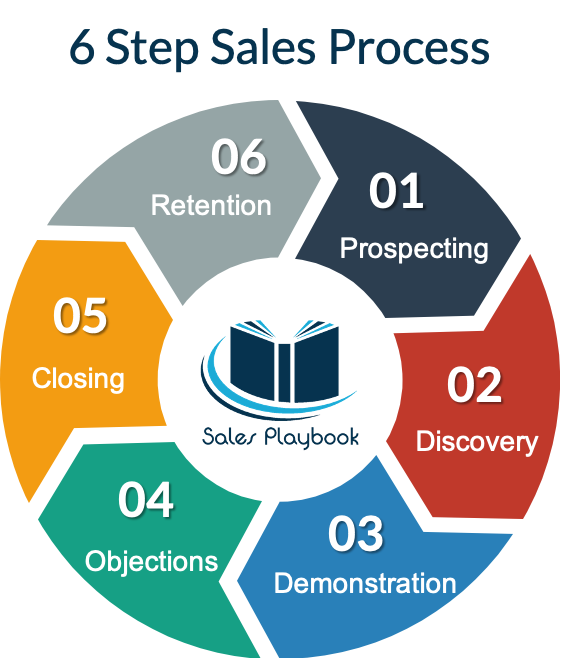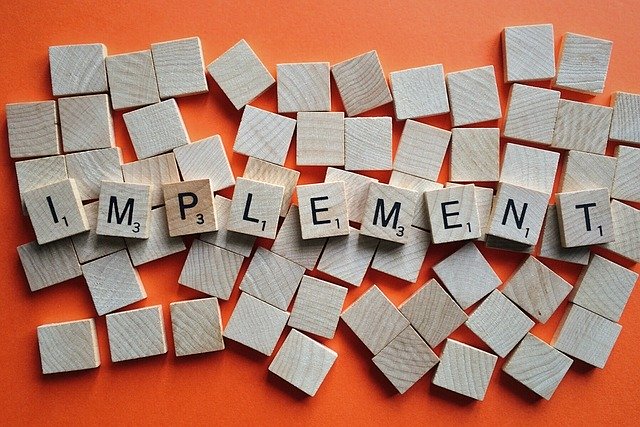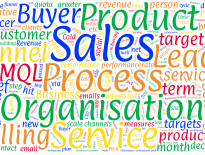
A sales process is a framework which sets out the steps a company takes to turn a lead into a customer. The framework is repeatable and lays out a clear set of activities that enable a consistent process of taking a prospective buyer to a closed sale and beyond.
Generally this process can consist of 5-7 steps, but depending on your organisation and the industry you operate in there could be more or less steps involved. The setup of your company sales and marketing structure will also have an impact as to who has control over which steps. If you have an SDR (Sales Development Representative) or BDR (Business Development Representative) team setup then it is likely that they will take control over executing the early steps of the sales process, and depending on how your account management or customer success teams are organised they may take control of the later steps of the sales process. However, many small or medium size companies will have their sales team actioning all steps.
The sales process is effectively a roadmap for your sales professionals, but this is also a journey for potential customers, from realising they have a need for your product or service through to making an actual purchase.
By implementing a standardised sales process your sales team benefit from an easy to use structure, the ramp up time for new hires is significantly improved and the sales leadership team benefit from more accurate forecasting and improved metrics.
The Difference Between Sales Process and Sales Methodology
It’s very important that your sales process and sales methodology work together, but do not make the mistake that these are the same.
A sales process is the steps a company takes potential buyers through from initial prospecting to agreeing a purchase and beyond.
A sales methodology is a philosophy that sets the foundation for your sales team when approaching the sales process. Your methodology can also serve as a guide for your sales team to understand what key areas you want them to explore when engaging with prospects, like a to-do list.
It is important to have both your sales process and sales methodology clearly defined in your Sales Playbook.

1. Prospecting
Before you can sell anything, you need someone to sell to and that’s why every sale starts with a lead. Leads are found through prospecting also known as lead generation.
This step will involve searching for and researching new leads who will be a good potential fit for your products or services. This can be done using channels like an existing CRM, leveraging social media, networking at events or trade shows and referrals.
Once the lead has been acquired the sales team will begin to action the stages in their sales pipeline. The first will be to initiate contact and start to build a new relationship and gather initial information. This will typically be done through cold calling, emailing and social media channels like LinkedIn. Creating a strong sales cadence for contacting is good idea here.
During this first step the goal is to gather key pieces of information to see if the customer will be a good fit for your products or services and vice versa. It’s a good idea to have a set of qualifying questions that your sales reps need to action and a lot of companies may have a framework for lead qualification and an acronym to support this. There are frameworks that have been around for years on qualifying leads and it is highly recommended to either use one of these or create one to give structure to your sales and/or development teams while prospecting. My article Frameworks for Lead Qualification can give you more insight when implementing these into a business.
When the lead is successfully qualified your rep will proceed to the discovery step, which can be done at the same time. But, typically this will be set up as a separate interaction, by video conferencing, in person or by phone again. Depending on the size and structure of your organisation the prospecting step will be actioned by an SDR (Sales Development Representative) or BDR (Business Development Representative) individual or team to do the research and cold outreach.
2. Discovery
The discovery step allows you to really get to know your potential buyer and their organisation. It’s important to do a needs assessment or analysis so you can determine how your product or service will align with the buyer’s requirements. Your sales team should have a series of set questions to ask during this step to make sure important information is gathered and allows the conversation to flow. These questions should also be included in your Sales Playbook.
The questions should be open-ended to encourage the buyer to engage in conversation. Active listening is important, especially during the early steps of the sales process, so the aim of the discovery step is to ask the buyer questions, but then let them do the majority of the talking so that key information can be gathered. It is important to avoid discussing products or pricing at this point, but instead to understand the potential client’s situation, challenges and motivations.
Information gathered during the discovery step makes it easier for your sales reps to customise their pitch or demo specific to each buyer in preparation for the next step and gain knowledge in order to anticipate any objections that could appear later on.
Examples of questions that could be included during discovery are:
- What are your goals?
- What would a successful outcome look like?
- What are the primary roadblocks to implementing this solution?
- What’s the process for purchasing the product or service once the decision has been made?
- How can I help make this process easier for you?
Choosing The Right Sales Methodology will play a key role in the prospecting and discovery steps of your sales process.
My article A Brief History of Modern Sales Methodology is also an interesting read.
3. Demonstration
This is the moment for your sales reps to shine and show that they have taken onboard and understood the key information the buyer has provided during discovery.
Using this opportunity to present or demonstrate clearly the value of your solution is imperative and you should effectively communicate how these solutions align with the buyer’s needs, challenges and desired end goals. To accomplish this the aim is to successfully connect the potential customer’s needs and wants to the corresponding features and benefits of your offering. Where possible frame your product or service as a solution to a problem(s) the buyer and their organisation are facing.
Make sure your team makes note of any specific benefits that the potential customer is most enthusiastic about and target any additional context to facilitate the best possible presentation or demonstration.
Depending on the product or service you provide it might be a good idea to include members from other departments in this meeting, like an engineer or someone from the customer success team to demonstrate the level of service that they can expect from your organisation. This can also be an opportunity for technical questions to be answered without the need to book a further meeting before a decision to purchase is made.
4. Objections
Now that the sales rep has demonstrated your solution, it’s time to provide the potential customer with a tailored proposal to meet all of their needs discussed in previous steps.
Once this has been provided it is likely the buyer will have further questions or concerns which will need to be cleared up before they commit to making a purchase.
The objections that sales reps face are usually recurring so it’s important to update your company’s Sales Playbook when these objections come to light. This will allow all members of your sales team to be prepared with the best responses to remove any and all roadblocks to close the sale.
Objections will naturally appear during the lifecycle of your sales process so having a structure in place for dealing with these can significantly improve the chances of overcoming these. My article Frameworks for Objection Handling will provide more information.
5. Closing
The closing step is what every sales professional works towards and is typically where the buyer will either commit to purchase or end the process. There are hundreds of closing techniques, tips and tricks, but the most important thing to remember here is that this is not a stand-alone event and by completing all previous steps properly and in order will dramatically increase the Closed-Won percentage of your team.
There can be an element of negotiation at the closing step, so depending on the flexibility of your organisation it can be useful to have limited time offers available like discount for first time buyers, free usage of your platform for the first month or receiving a suitable add on that will benefit the buyer and potentially set up any cross or upsells down the line.
Discounting the price is something most organisations would like to avoid, however being flexible here would generally be better than losing the sale altogether. If this option is available the best way to make sure your sales reps don’t use this as standardised procedure is to make them aware that a lower price point will have an adverse effect on their compensation plan. After all you want the main focus for your sales team to be on selling value and not price.
6. Retention
Congratulations! They have successfully completed all steps of the sales process and you’re the proud owner of yet another customer, but it doesn’t stop here.
Depending on the size of your organisation the sales rep might maintain the relationship with your new customer. It’s important to make sure all follow-ups are made during the onboarding process and at suitable intervals thereafter. Happy customers make excellent candidates for upselling and cross-selling your other products or services later on.
In many cases, once the sale is confirmed the deal amount will go towards the sales reps quota and the new customer will pass to your account management or customer success team. They should then be responsible for continuing on the relationship that has been created and in turn have a target for retaining the business, upselling and cross-selling existing and/or new products and be incentivised accordingly.
Your sales rep will now repeat the sales process!
In Conclusion…
Having a structured sales process will make your team work more effectively, improve their performance and help to close sales quicker.
You may want to create a shorter or longer sales process for your organisation, but regardless of how many steps you have and how you choose for it to be structured, having an effective process in place is an important part in the success of your company. Make sure your sales process is clearly laid out in your Sales Playbook and that any changes are made immediately and communicated to your team.
“Success occurs when opportunity meets preparation”
Thanks for reading. If you enjoyed this article please like below and share on your social channels.


